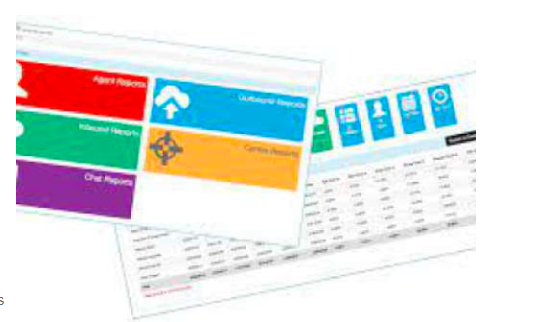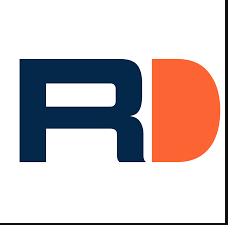Call centers serve as the frontline of customer interactions, and their performance is crucial in shaping customer satisfaction. To gauge and improve operational efficiency, call center reporting metrics are invaluable. In this article, we will explore the diverse array of reporting metrics, their significance, and how call centers can leverage them to enhance overall performance.
The Core Purpose of Call Center Reporting Metrics
Understanding the Metrics Ecosystem
Call center reporting metrics provide a detailed overview of various aspects of call center operations. From assessing agent performance to evaluating customer satisfaction, these metrics act as a compass for call center managers, guiding strategic decisions and fostering continuous improvement.
Optimizing Resource Allocation
Efficient resource allocation is a cornerstone of effective call center management. Reporting metrics offer insights into staffing levels, call volumes, and agent productivity, allowing call centers to allocate resources effectively, minimize wait times, and maximize customer satisfaction.
Key Call Center Reporting Metrics
1. Service Level
Service level, a familiar term from the previous article, measures the percentage of calls answered within a specific timeframe. This metric is pivotal in evaluating the responsiveness of a call center and directly impacts customer satisfaction. Maintaining an optimal service level ensures that customers experience prompt and efficient service.
2. Average Handle Time (AHT)
Average Handle Time (AHT) measures the average duration an agent spends on a call, including talk time, hold time, and any post-call work. Monitoring AHT helps identify inefficiencies in call handling processes, enabling call centers to streamline operations and improve overall efficiency.
3. First Call Resolution (FCR)
First Call Resolution (FCR) measures the percentage of customer issues resolved during the initial contact. A high FCR indicates efficient problem-solving, reduces the need for follow-up calls, and positively impacts customer satisfaction. Monitoring FCR allows call centers to address recurring issues and enhance agent training.
Agent Performance Metrics
1. Agent Utilization
Agent Utilization assesses the percentage of time agents spend actively engaged in customer interactions. High agent utilization indicates efficient resource allocation, while low utilization may signal overstaffing or underutilization. Striking the right balance is crucial for optimizing operational costs and maintaining service levels.
2. Occupancy Rate
Occupancy Rate measures the percentage of time agents spend on call-related activities, including talking to customers and completing post-call work. Balancing occupancy rate ensures that agents are productive without experiencing burnout, contributing to overall call center efficiency.
3. Quality Scores
Quality Scores reflect the level of service provided by agents based on predefined criteria. Monitoring quality scores through call monitoring and feedback systems helps identify areas for improvement in agent performance and customer interactions.
Customer Satisfaction Metrics
1. Customer Satisfaction (CSAT) Score
Customer Satisfaction (CSAT) Score is a direct measure of customer happiness. By collecting feedback through post-interaction surveys, call centers can quantify customer satisfaction levels and identify areas for improvement. A high CSAT score correlates with positive customer experiences and loyalty.
2. Net Promoter Score (NPS)
Net Promoter Score (NPS) gauges customer loyalty and the likelihood of recommending the company to others. This metric is derived from a simple question: “How likely are you to recommend our company to a friend or colleague?” NPS provides insights into overall customer loyalty and can guide strategies for customer retention.
Operational Efficiency Metrics
1. Abandonment Rate
Abandonment Rate measures the percentage of callers who hang up before reaching an agent. High abandonment rates may indicate long wait times or inefficient call routing. Analyzing abandonment rates helps call centers optimize call routing and reduce wait times, enhancing overall customer satisfaction.
2. Call Transfer Rate
Call Transfer Rate indicates the frequency with which calls are transferred between agents or departments. Excessive call transfers can lead to customer frustration and a disjointed experience. Monitoring and optimizing call transfer rates contribute to a seamless customer journey and improved operational efficiency.
Utilizing Call Center Reporting Metrics for Strategic Decision-Making
Data-Driven Decision-Making
Leveraging Insights for Continuous Improvement
Call center reporting metrics serve as a goldmine of actionable insights. By analyzing these metrics, call center managers can make informed decisions to optimize processes, enhance agent performance, and ultimately elevate the customer experience. Regularly reviewing and acting upon these insights fosters a culture of continuous improvement within the call center.
Strategic Resource Planning
Effective resource planning is a key outcome of utilizing call center reporting metrics. By aligning staffing levels with historical call volumes and service level goals, call centers can ensure optimal resource allocation, minimizing costs, and maximizing efficiency.
Implementing Best Practices in Call Center Reporting
1. Regular Monitoring and Analysis
Consistent monitoring and analysis of call center reporting metrics are essential. Establishing a routine for reviewing key metrics allows call centers to identify trends, anticipate challenges, and proactively address issues before they impact performance.
2. Aligning Metrics with Business Goals
Call center reporting metrics should align with broader business goals. Whether the focus is on cost reduction, improved customer satisfaction, or increased efficiency, selecting and prioritizing metrics that directly contribute to these goals is crucial for strategic decision-making.
3. Investing in Technology
Implementing advanced reporting and analytics tools can significantly enhance a call center’s ability to collect, analyze, and act upon data. Modern technology allows for real-time monitoring, predictive analytics, and customized reporting, empowering call centers to stay agile in a dynamic business environment.
The Future of Call Center Reporting Metrics
Embracing Technology and Artificial Intelligence
Incorporating Predictive Analytics
The future of call center reporting metrics lies in predictive analytics. By leveraging artificial intelligence and machine learning algorithms, call centers can forecast trends, anticipate customer needs, and proactively address issues before they escalate.
Enhanced Customer Journey Analytics
As customer interactions extend across various channels, the integration of customer journey analytics becomes paramount. Call centers will need to track and analyze customer interactions seamlessly across channels to gain a holistic view of the customer journey and provide a consistent and personalized experience.
Conclusion
In conclusion, call center reporting metrics are the backbone of effective call center management. From evaluating agent performance to measuring customer satisfaction, these metrics provide a comprehensive view of call center operations. By harnessing the power of data-driven decision-making, call centers can optimize efficiency, enhance customer satisfaction, and stay agile in an ever-evolving business landscape. As technology continues to advance, the future of call center reporting metrics holds the promise of even more sophisticated analytics, enabling call centers to deliver unparalleled customer experiences.





